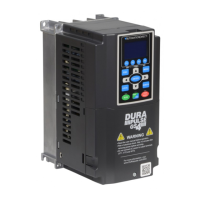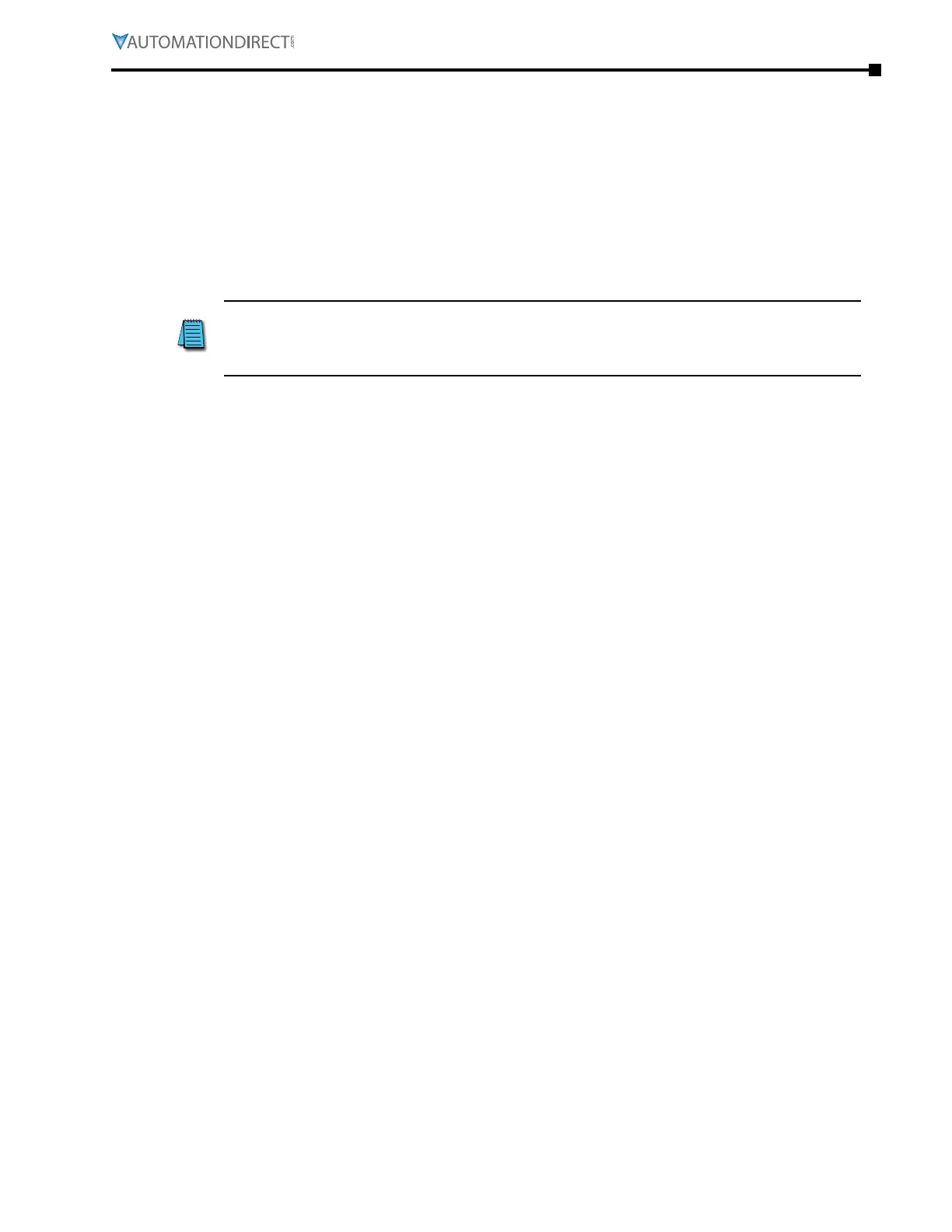Appendix F: PID Control
Page F–7
DuRApulse GS4 AC Drive User Manual – 1st Ed, Rev A - 10/20/2017
derivative value (d)
The controller output is proportional to the differential of the controller input. During elimination
of the error, oscillation or instability may occur. The differential control can be used to suppress
these effects by acting before the error. That is, when the error is near 0, the differential control
should be 0. Proportional Gain (P) + Derivative Value (D) can be used to improve the system state
during PID adjustment.
If the control output is too sluggish after the Proportional Gain (P) and Integral Time (I) values
are set, Derivative Value (D) may be required. Begin with a high Derivative value and reduce the
value to the point of system instability. Then increase the Derivative value until the control output
regains stability. Stability can be tested by moving between two wide-spread setpoint values.
Since Derivative or Differential Control is performed based on the differentiation of
deviation, it is a very sensitive control. Therefore, it may also react to extraneous
signals and noise, and can easily lead to unstable system control. D-control is not
normally required for the control of processes such as flow, pressure and temperature.
ProPortional integral control (Pi)
When processes are controlled by Proportional Gain only, deviation cannot be eliminated entirely.
Proportional + Integral control (PI) can generally be used to eliminate residual deviations. PI
control can eliminate deviation incurred by the targeted value changes and the constant external
interferences. However, if the I action is excessively powerful, it will delay the responding toward
the swift variation, and as a result cause unstable system operation.
ProPortional diFFerential control (Pd)
In deciding when to use Proportional-Differential Control, we need to understand how the
system would react as a Proportional-Integral-Differential system. When a deviation occurs in
a controlled system, the system sees a greater load than the differential has provided energy to
control. If that deviation is small, the system can go into a vibratory state if the Proportional Gain
as the Integral Time is used is being thrust upon the system too often within a small space of time.
To prevent this type of system reaction, the use of Proportional and Differential (PD) alone may
be warranted. The use of Proportional (Step Change) Gain, and the feed-forward action of the
differential value can result in a faster acting stable system operation.
ProPortional integral diFFerential control (Pid)
When choosing to use Proportional-Integral-Differential (sometimes called Proportional-Integral-
Derivative) control, the Integral Time is utilized to more quickly provide better control of the
deviation while the Derivative Value is used to restrain vibration. The Proportional Gain provides
the step change to eliminate the optimum state error as quickly as possible, providing a method
of controlling the process with small deviations, high accuracies, and a stable operating system.

